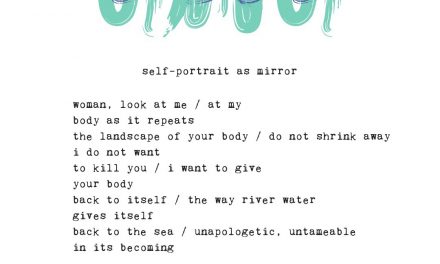Mind + Body
Explaining Mental/Behavioral Dysregulation & Its Magnetic Pull
 Art by Helena Vissing
Art by Helena Vissing
“Dysregulation takes many forms but is characterized by a prolonged activation of our entire energy system, from increased heart rate to our fight and flight impulses…”
Can you check off many or all of the following?:
- Setting positive intentions often
- Actively challenging negative thinking
- Practicing gratitude and presence
- Letting go of self-sabotaging habits
Maybe you have come to significant insights about yourself through doing the above. And maybe you still experience times of getting pulled into dysregulation and overwhelm again and again. This paradox is so common and cruel. Cognitive and spiritual work on our thinking, beliefs, and assumptions is crucial, but it may not always be enough to explain why we continue patterns of self-destruction and dysregulation.
But first, what is dysregulation? This is a term we use often in psychological realms and within mental health fields. Emotional dysregulation refers to a poorly modulated emotional response, meaning it does not fall within the conventionally accepted range of emotive response or is not a healthy response for the particular individual. Dysregulation takes many forms but is characterized by a prolonged activation of our entire energy system, from increased heart rate to our fight and flight impulses, and then a lack of release of energy that is necessary to re-settling. For example, an uncomfortable interaction at the grocery store lingering in our body after we get home, or when a conversation leaves us feeling frustrated for an hour or even the rest of the day. We might be entirely aware that the frustrating or threatening situation has passed, but our body keeps reacting as if it’s still happening.
Our Nervous Systems and Regulation.
The hidden language of our nervous systems tell the collective story of our evolution as mammals and our individual life stories of overwhelm and survival. Our survival has relied on our exceptionally sensitive nervous system, which is wired to sense any sign of danger. Even the slightest sense of it activates the chain of our survival instincts, from the subtlest increases of heart rate and respiration to full-blown fight, flight or freeze reactions. We normally move through these cycles of activation by releasing the energy through discharging; we shake, tremble, jerk, clear our throats, or shake it off. We dust ourselves off and settle into a restorative state, as the danger has passed. Sometimes.
When the personal story of our nervous system is one of overwhelm and too much danger, the normal cycles of activation, discharge, and settling have been interrupted and left incomplete, stuck in activation. This is a vortex of dysregulation; a black hole of hyperarousal. When we get pulled into this vortex and hurled into the sensations of dysregulation, we are not able to move into the discharge that is necessary for settling and recuperating. Our deep-seated survival mechanisms will continue to activate, like pushing the accelerator while in park.
Mother Nature formed our system in such a way that we can get activated by the slightest hint of danger so as to never miss a real threat. Patterns of self-destruction are about being stuck in hyper-activation, because our survival force is relentless. The magnetic pull of dysregulation is the pull of Mother Nature. She is our life force of survival and our shadow undercurrent of self-destruction.
But the magnetic pull of dysregulation can be resisted. The rhythm of our nervous system can be restored. Through healing work, a slow but continued pendulation from the activated state to the smallest identifiable shift towards discharge and settling will build up resilience. Eventually, our natural capacity for releasing the energy of danger can be reestablished. But this is slow and delicate work requiring safety, patience, and the presence of dedicated healers who can witness and hold space.
Actual Applications of Healing.
Moving into a state of balance can be hard, even boring. Healing is a process of slow, effective discharging and shifting to more self-regulated functioning, but as much as we long for this and work hard on it, it is also a sense a loss. Our patterns of dysregulation have their own beauty in all their destructiveness: the cuticle-biting, caffeinating, sleep-chaos (too little, too much); any reaching for a moment of numbing or high, from mild to severe. They are parts of our personality. They are embodiments of survival. They are not easily amputated. Which is why our process towards healing should progress as titration; one drop at a time, the smallest dose needed for that moment to help the settling of our nervous system. Big shifts in the nervous system, even if they are shifts towards settling and calming, can be experienced as stressful, especially for nervous systems that have endured a lot of overwhelm in their development.
A somatic approach to healing is therefore about working the periphery, always sensing the edge. Slowing down. We can’t bypass or fix our survival mechanisms; they are deeply imbedded in our biology. But we can befriend our nervous system and learn to speak its language. The foundation of this is learning to track our shifts and notice what pushes us into activation and what helps us settle. What helps us settle begins with the smallest physical sensations: bringing awareness to particular body parts, feeling your body’s connection to the surface you are on, noticing not just our emotions but also the particular sensations of them. In other words: inner attention. We need to know the sensations of getting activated in order to develop habits of releasing the energy and gently bringing ourselves back to settling.
The deep work of somatic healing is done in a protected and professional space. But the ongoing work of befriending your nervous system is a daily practice and a way of living.
Helena Vissing, M.S., PsyD, is a Danish therapist working from psychodynamic, depth psychology, and somatic orientations. Besides psychotherapy work with adults, she also specializes in maternal mental health and reproductive psychology and practices in West Los Angeles. Her special focus is on the intergenerational dynamics of mother-daughter-relationships and how women’s transitions to motherhood are deeply affected by their own experiences being mothered. Helena did her predoctoral internship at the C.G. Jung Institute of Los Angeles, where she got training in depth psychology psychotherapy and Sandplay. She is faculty on the Training Committee of Maternal Mental Health Now as well as adjunct faculty at Antioch University and The Chicago School of Professional Psychology.
Follow Helena www.allthingsmaternal.blog








